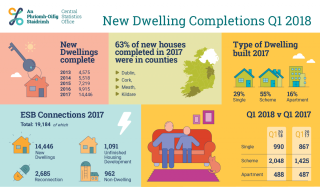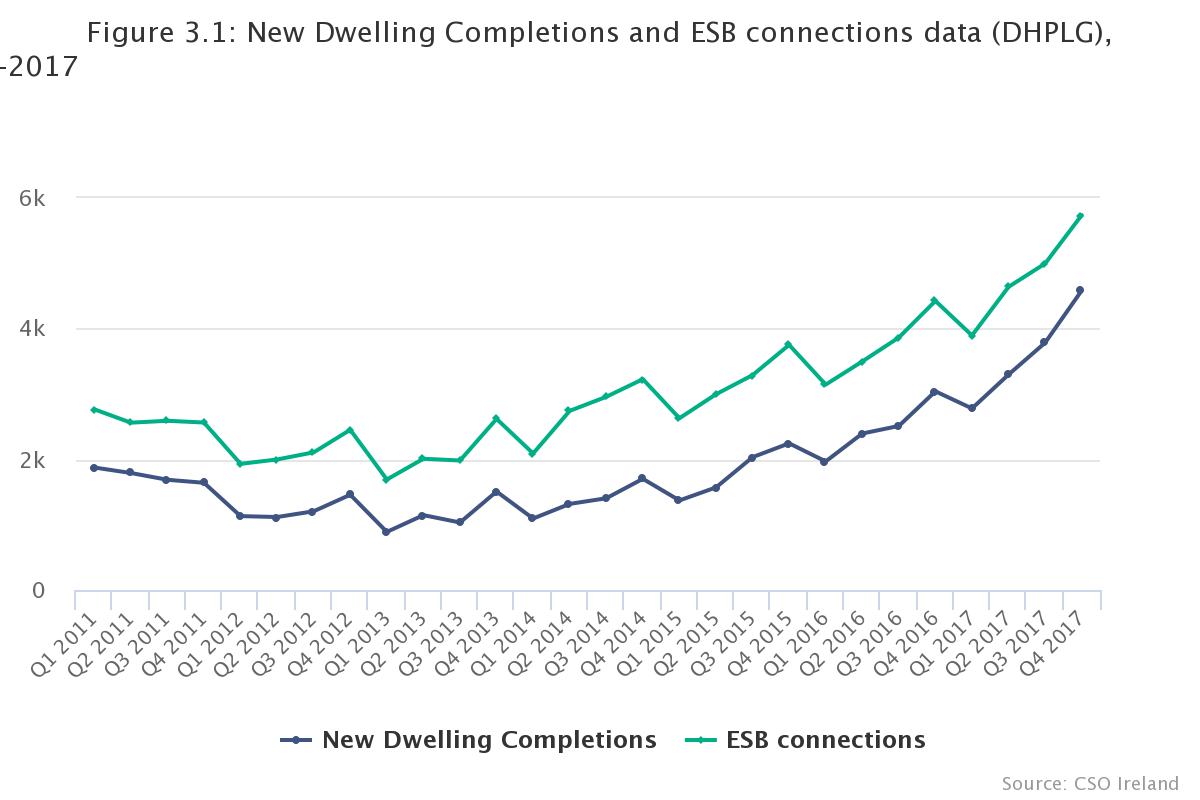Construction over-reported by over 31,000 homes

Between 2011 and 2017, 53,578 new homes were built, a far cry from the 85,154 reported in official statistics (see Figure below).

While there has been a notable increase in housing construction in recent years, which is to be welcomed, this new report shows that a further 31,576 homes are needed in addition to the estimated annual construction requirement of between 16,000 and 30,000.
Construction of social housing is still far too low, with the latest figures showing just 396 homes constructed by local authorities in 2017. Minister for Housing, Planning and Local Government, Eoghan Murphy, recently restated the housing commitment in the National Development Plan (NDP), saying these homes would be built on local authority lands. The NDP commits €4.2 billion to building 40,000, that’s just €105,000 per unit. In July 2017, the Minister in response to a Parliamentary Question, indicated a range of construction-only costs from €137,709 for a 1-bed, to €169,682 for a 4-bed. On the figures provided by the Minister himself, the funding gap is between €1.3 billion and €2.5 billion to deliver the number of newly constructed homes committed.
In our Budget Choices document, Social Justice Ireland proposed that Government provide an additional €1.25 billion for the provision of social and low-cost housing options. This includes
- Investment in a specially developed housing body that could make use of both public and private investment to deliver a new rental model, cost rental, at the scale required. This model is successful in other countries in Europe and is being piloted on a small scale here, but with demand for low cost housing increasing, we need to scale up.
- Allowing local authorities and approved housing bodies to pool their resources to access low-cost finance to fund construction of social housing.
- Making loans available to owners of vacant or disused properties, particularly in Rent Pressure Zones, to bring those properties into repair and make them available for rent – an expansion of the Repair and Lease scheme.
- Enhancing homeless services, increasing resources for front-line services while also investing in education, risk management and supports for those at risk of experiencing homelessness.
Many of these proposals are for one-off investments in long-term solutions to secure housing support at affordable levels, particularly for those on lower incomes.